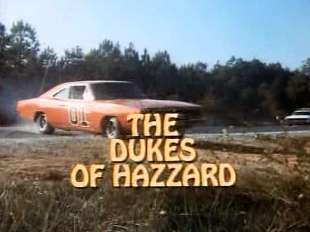The Anatomy of a Cultural Lie
An analysis of how symbols are rebranded and sold to an unsuspecting market, based on the cultural impact of *The Dukes of Hazzard*.

An analysis of how symbols are rebranded and sold to an unsuspecting market, based on the cultural impact of *The Dukes of Hazzard*.
1. Product Launch: The "Good Ol' Boy" Brand
From 1979 to 1985, *The Dukes of Hazzard* captured a significant market share of American television viewership. Its core product, a 1969 Dodge Charger named the General Lee, was branded not just as a car, but as a symbol of rebellious fun. The vehicle's most prominent feature, a large Confederate battle flag on its roof, was successfully marketed as an emblem of "freedom" and "anti-establishment" spirit, effectively disconnecting it from its historical origins for a generation of consumers.

The chart above illustrates the stark contrast between the televised branding of the symbol and its historical reality. The show presented a narrative entirely composed of "Fun & Rebellion," completely omitting the "Hate & Oppression" associated with the flag's history. This created a powerful, yet deceptive, brand identity.
2. Market Positioning: Symbol vs. Substance
A key part of this market research is to deconstruct the branding. The infographic below compares the product's advertised features ("The TV Narrative") with its actual historical composition ("The Historical Truth"). The successful marketing campaign relied on emphasizing a fictional, positive narrative while completely ignoring the deeply negative and violent history associated with the symbol. This strategic omission was critical to its widespread acceptance.

3. A Timeline of Redefinition
No symbol exists in a vacuum. Its meaning is forged and reforged over time. The following timeline illustrates how the Confederate battle flag's meaning was actively redefined. It was not an ancient relic, but a symbol deliberately revived to oppose racial equality, decades before being laundered into pop culture entertainment. The show's broadcast period represents the final, and most commercially successful, stage of this re-branding effort.

4. Consumer Demographics & Adoption of Ignorance
The primary demographic for this rebranding was a generation of young, predominantly white Americans. The data below shows the market penetration of the show's narrative. For these consumers, the intended message of "harmless fun" was adopted with near-total success, while the product's toxic historical ingredients were left unlisted and unexamined. This led to a widespread, uncritical acceptance and even affection for a symbol of hate.

This chart visualizes the adoption rate of the two competing narratives among the show's target youth audience. The "Rebel Fun" narrative saw almost universal adoption, while awareness of the "Historical Hate" narrative was minimal. The personal anecdote of wearing a Confederate flag bandana without understanding its meaning is a case study representing this successful, yet damaging, market penetration.
5. Process Flow: The Internalization of a Lie
How does a person internalize a toxic narrative? The process mirrors certain psychological coping mechanisms, such as dermatillomania—a compulsive behavior to "fix" a perceived imperfection, often causing more harm. Confronting an uncomfortable truth (like the real meaning of a beloved symbol) creates internal discomfort. The instinctive reaction is to "fix" this feeling by picking at the truth—justifying, arguing, or explaining it away. This process, illustrated below, prevents genuine understanding and healing, instead reinforcing the initial lie.
